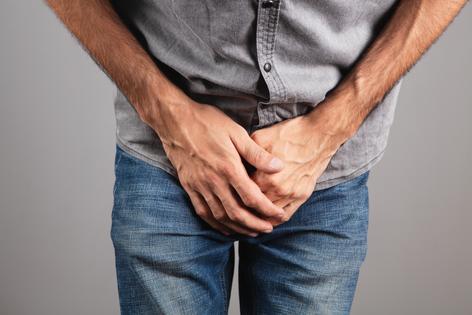What to do about pain ‘down there’?
Published in Health & Fitness
Chronic pelvic pain — a condition also known as chronic prostatitis/chronic pelvic pain syndrome, or CP/CPPS — is one of the more common and challenging conditions older men face. “CP/CPPS is often regarded as an ‘orphan disease,’ as it has no definitive cause or proven treatments,” says Dr. Michael O’Leary, a urologist and professor of surgery at Harvard-affiliated Brigham and Women’s Hospital. “This makes it tough to diagnose and frustrating for men seeking relief.”
Who gets CP/CPPS?
Some estimates say that up to 15% of men will experience CP/CPPS during their lives. Symptoms include cramping, aching, or throbbing pain in and around the pelvis and genitals. CP/CPPS can be associated with erectile dysfunction and painful ejaculation. Many men with the disorder often complain of frequent and urgent urination and a burning sensation.
While the problems of CP/CPPS are real, the underlying cause is often unknown. “Not much recent research has been done in this area, so experts often differ on its possible causes,” says O’Leary.
“Symptoms also can vary significantly for the same underlying problem. For instance, similar discomfort can occur with a documented prostate infection, inflammation without infection, nerve dysfunction, or an imbalance of microorganisms in the gland we are just learning about. Or some combination of these.”
Another reason CP/CPPS is tricky to diagnose is that symptoms can come and go. The discomfort may suddenly vanish, only to return weeks or even months later. When the symptoms do reappear, they may be more severe than before, or new ones may occur.
How to diagnose CP/CPPS
Even with the challenges of diagnosis, doctors may identify CP/CPPS by ruling out all other possible causes. Your doctor first will ask questions to assess pain levels, urinary symptoms, and quality of life, including any new appearance of anxiety or depression. The doctor will perform a physical exam, including a rectal exam, and usually order urine and blood tests to look for signs of infection and check kidney function.
Some doctors also use a system called UPOINT as part of the diagnosis process by rating a person’s symptoms, severity, and location. The results can further identify possible underlying causes and help pinpoint treatment options.
UPOINT stands for:
“If your evaluation shows no specific problem that could explain your symptoms, CP/CPPS is the likely diagnosis,” says O’Leary.
Trying treatments
There is no cure for CP/CPPS, so the goal of treatment is to manage the condition and keep it in remission. “Until we know more, treatment is a trial-and-error approach,” says O’Leary. Here are some strategies commonly used to alleviate and manage specific CP/CPPS symptoms. It’s typical to try more than one before finding something that works. A combination of treatments may also be necessary. “Many men can manage their CP/CPPS and get better over time, so never feel that you just have to deal with the discomfort,” says O’Leary.
(Matthew Solan is the executive editor of Harvard Men's Health Watch.)
©2025 Harvard University. For terms of use, please see https://www.health.harvard.edu/terms-of-use. Distributed by Tribune Content Agency, LLC.










Comments